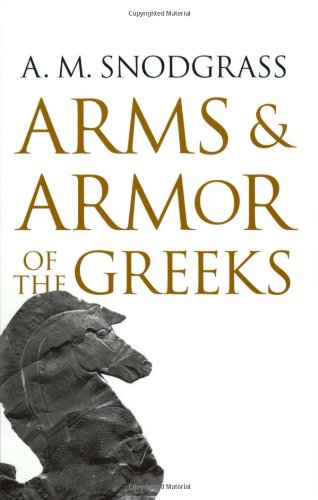Description
“We shall never know how Marathon was won, but we will be able to be moderately certain that valor alone would not have won it, nor even perhaps the combination of courage with the quite rudimentary tactical skill for which the style of Greek warfare at that time gave scope. The superiority of Greek equipment should have been an important factor here and elsewhere, and at times perhaps a decisive one.”–from the introduction
In Arms and Armor of the Greeks, Anthony M. Snodgrass uses available literary, archaeological, and artistic evidence to piece together a picture of ancient Greek armory from the Mycenaean period through the campaigns of Alexander the Great. The ancient Greeks were neither populous nor rich in natural resources, Snodgrass explains, so it is remarkable that they succeeded in battle as regularly as they did.
“Snodgrass’s book on Greek arms and armour should rank already as a standard textbook… It is as clear as any book can be on a surprisingly ill-documented subject.”–Economist
“Helps to provide an explanation for why (for one thing) the Greeks won the Persian Wars and how they then stuck for centuries, with true military unimaginativeness, to their far from enterprising hoplite phalanx tactics.”–Times Literary Supplement
In 490 B.C. a force of some 10,000 Athenians and their allies met a much larger Persian army on the rocky beach at Marathon. The Greeks arrayed themselves in a thin line, advancing on the Persians slowly, then breaking into a run, splitting the center and enfolding the Persian army in their wings. The tactic surprised the Persians, and even some Greeks. But, argues Cambridge University archaeologist A.M. Snodgrass, tactical innovation alone did not carry the day. “We shall never know fairly how Marathon was won,” he writes, but “the superiority of Greek equipment should have been an important factor here and elsewhere, and at times perhaps a decisive one.”
The Greeks, in short, were better armed than the Persians, an edge that had evolved over centuries of martial experimentation. Snodgrass traces the development of armor and weapons and the usage of adjuncts like cavalry and war dogs through Greek history, from Mycenaean times to the age of Alexander. He notes, gainsaying many other military historians of ancient Greece, that the Greeks were nowhere near as effective in the use of cavalry as were their opponents, Persian and another way; even in Alexander’s time, he writes, cavalry was neglected in favor of mass infantry attacks from heavily armed phalanxes–a tactic that should have cost many lives, but that surely put an unholy fear in the Greeks’ enemies. Snodgrass’s slender volume is a useful companion for students of Herodotus, Xenophon, Homer, and other chroniclers of ancient warfare. –Gregory McNamee













































